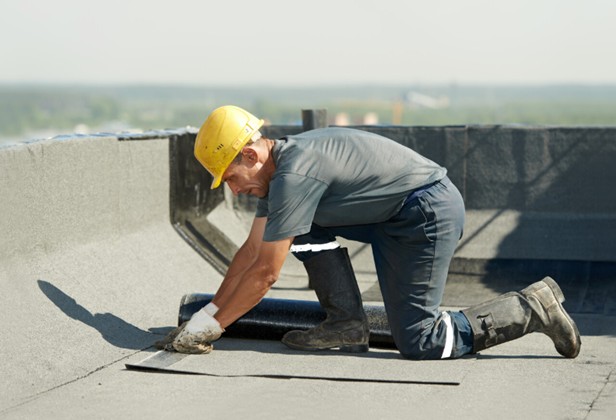Enhancing Fire Safety with Commercial Roofing: Materials, Ratings & Code Compliance
Introduction
When it comes to protecting your commercial property, fire safety should never be an afterthought. The roof plays a crucial role not only in structural defense but also in how fire behaves during an emergency. At Etheridge Roofing, we specialize in commercial flat roofing systems designed with both durability and fire safety in mind. In this blog, we'll explore the essentials of roofing fire ratings, material choices, installation practices, and code compliance—all of which contribute to a safer facility.
Understanding Roofing Fire Ratings: Class A, B, and C
Roofing materials are classified by their ability to resist fire exposure based on testing standards set by UL (Underwriters Laboratories) and ASTM. Here's what each fire rating means:
- Class A: Highest resistance to fire. Withstands severe exposure, resists flame penetration, and limits surface flame spread.
- Class B: Moderate resistance. Effective against moderate exposure to fire.
- Class C: Lowest rating. Resists only light surface flame exposure.
Most commercial buildings aim for Class A systems, which provide maximum protection, especially in regions with higher fire risk or where codes mandate it.
Material Selection Matters
Not all roofing materials perform the same under fire conditions. Some materials are naturally fire-resistant, while others require additional treatment or layering. Examples include:
- Single-Ply Membranes (TPO, PVC): When used in a complete system with proper underlayment and insulation, these can achieve Class A ratings.
- Modified Bitumen: Fire performance depends on system design and additives.
- Metal Roofing: Non-combustible, but fire rating depends on deck and insulation materials below.
Working with a contractor like Etheridge Roofing ensures that your system is built with compliant, fire-rated components from top to bottom.
Installation Quality Is Critical

Even the best-rated materials can fail if installed improperly. Poor installation can:
- Create gaps at penetrations (vents, curbs, skylights), allowing flames or heat to enter
- Compromise membrane seams or flashing, reducing fire resistance
- Allow premature roof collapse during structural fires due to weak detailing
Our team is trained to install all components—especially high-risk details—with fire performance and safety in mind.
Compliance with Fire Codes & Building Regulations
Local and national fire codes often require specific fire ratings for commercial roofs depending on occupancy type, building height, and proximity to other structures. Etheridge Roofing stays current with:
- IBC (International Building Code) and NFPA (National Fire Protection Association) standards
- Regional fire safety regulations and manufacturer requirements
We ensure that the materials, assembly, and installation methods we use are fully compliant. Choosing a contractor who understands these codes isn't optional—it's essential.
Hidden Risks of Non-Compliant Roofing

Using non-rated materials or ignoring fire safety in design can expose your facility to serious consequences:
- Faster roof collapse during a fire due to weak or flammable layers
- Toxic smoke production, endangering occupants and firefighters
- Accelerated flame spread, especially near mechanical penetrations
- Insurance issues or code violations, leading to fines or rework
These risks can be mitigated through smart material selection and expert installation—both areas where Etheridge Roofing excels.
Final Thoughts: Fire-Resistant Roofing Is Smart Business
A well-installed, fire-rated commercial roofing system is more than a safety measure—it's a smart investment. It protects lives, limits damage, ensures compliance, and enhances insurability. At Etheridge Roofing, we’re committed to delivering systems that do more than just meet code—they raise the standard for performance and protection.
To learn more about fire-rated commercial roofing options or to schedule a code-compliant roof assessment, contact Etheridge Roofing today.
Sources
- UL Solutions – Roofing Systems Fire Ratings Overview
- https://www.ul.com/resources/roofing-systems-fire-ratings
- ASTM International – ASTM E108: Standard Test Methods for Fire Tests of Roof Coverings
- https://www.astm.org/e0108-21.html
- International Building Code (IBC) – Fire Classification Requirements for Roof Coverings
- https://codes.iccsafe.org/codes/ibc
- National Fire Protection Association (NFPA) – Building and Life Safety Standards
- https://www.nfpa.org/Codes-and-Standards
- National Roofing Contractors Association (NRCA) – Fire and Wind Design Guide for Roof Assemblies
- https://www.nrca.net
Posts by Tag
Recent Posts
Popular Posts
Selecting the appropriate roofing system is...
The connection between the quality of our...
Recent Posts
When faced with Emergency Commercial Roof...
As hurricane season approaches, property managers...







